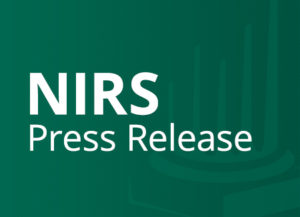May 7, 2009, Washington, D.C. – Women remain at a higher risk for retirement insecurity as compared to men, according to a new research brief issued today by the National Institute on Retirement Security.
That risk can be reduced by ensuring women have the combination of a traditional pension, supplemental 401(k)-type individual savings, and Social Security.
“Shattering the Retirement Glass Ceiling: Women Need a Three-Legged Stool,” examines the specific challenges facing women in retirement and assesses the policies that may help increase retirement security for women. The research finds achieving retirement security often is more challenging for women than men and includes the following key findings:
- Women need to accumulate more retirement assets than men because they often to live longer. But, acquiring enough assets is more difficult because women still have lower wages and less access to retirement plans during their working years as compared to men.
- Defined benefit (DB) pension plans provide benefits and protections that are especially important for women – spousal protections and a lifetime income stream that cannot be outlived.
- Supplemental defined contribution (DC) savings plans like 401(k) accounts offer portability of assets, which is an important tool for women who may move in and out of the workforce more so than men.
- Attaining the “three-legged retirement stool” – Social Security, a traditional DB pension, and supplemental DC savings – offers the greatest opportunity for women to achieve security in retirement.
“The data reveals that the retirement gender gap is alive and strong,” said Ilana Boivie , NIRS policy analyst and author of the research brief. She added, “Women still earn less, have less to save, and are less likely to have workplace retirement plans. Our research indicates that women can shatter that retirement glass ceiling with a boost from a three-legged retirement security stool. And given that the global economic crisis has drastically eroded retirement readiness, it’s all the more urgent that a policy framework is put in place to give all women a shot at achieving retirement security with a pension, 401(k)-type supplemental savings accounts, and Social Security.”
The research finds that that a woman with a salary of $50,000 must save $1,000 more per year than her male counterpart to achieve equitable retirement income because of her longer life expectancy. Yet according to a 2007 study, full-time female workers made just 76.2% of their male counterparts’ wages – that means less money for savings.
The study also indicates that women are more likely to live above the poverty line in retirement when they have income from pensions. But, just 23.3% of women have their own pension as compared to 42% of men. Among women dependent on their husband’s retirement plan, those whose husbands have a DB plan may be better off than women whose husbands have only a DC plan, because DB plans have special protections for spouses.
Additional data and analysis is available by dowloading the full research Issue Brief here. Read Commentary here.
About NIRS
The National Institute on Retirement Security is a not-for-profit organization established to contribute to informed policymaking by fostering a deep understanding of the value of retirement security to employees, employers, and the economy through national research and education programs. Located in Washington, D.C., NIRS seeks to encourage the development of public policies that enhance retirement security in America.
